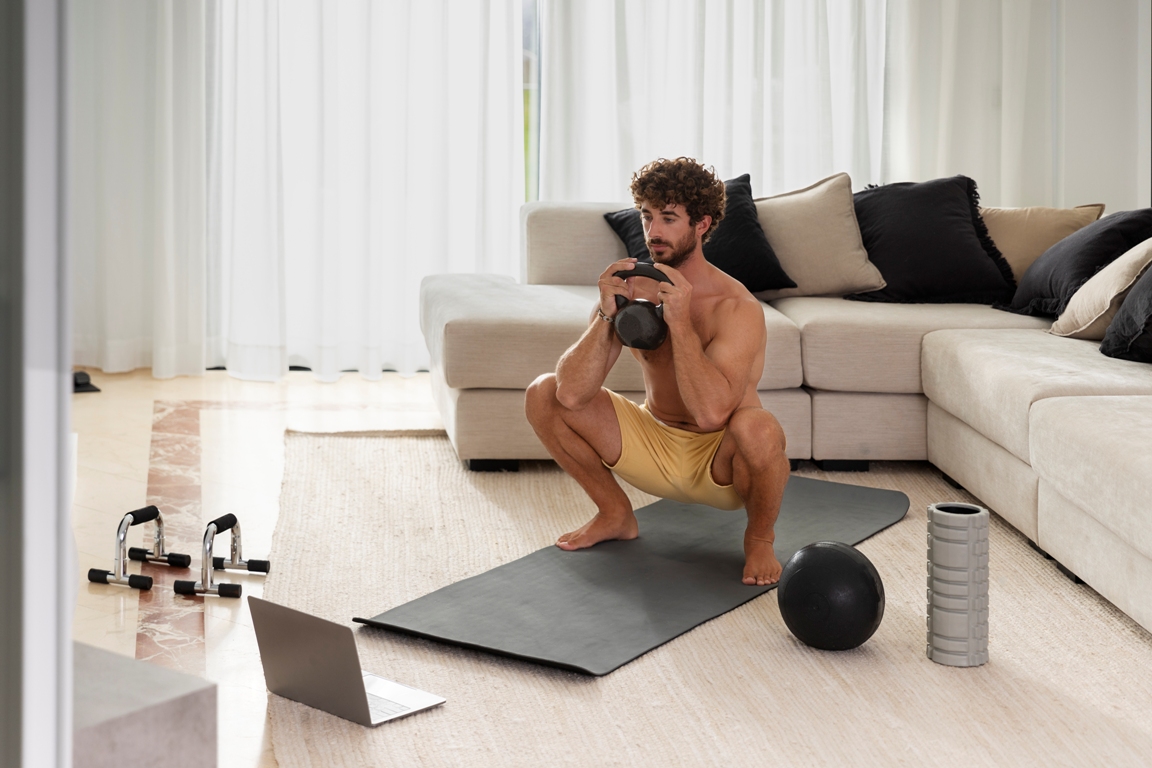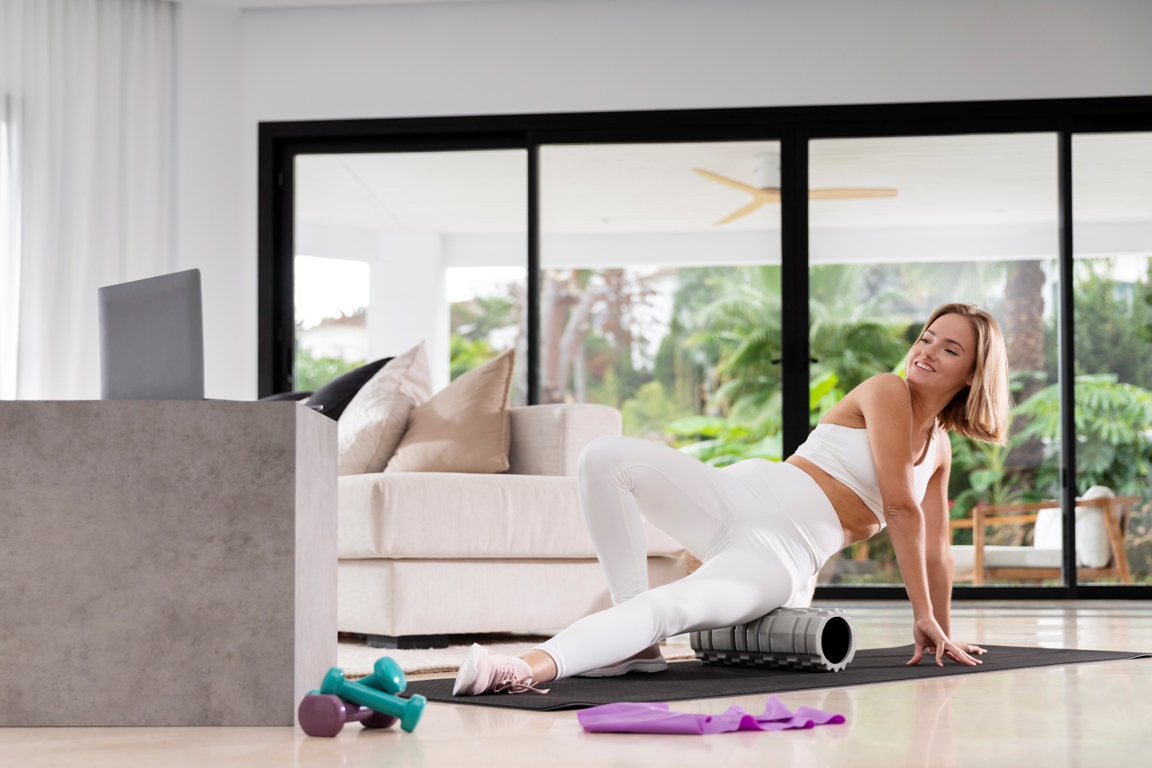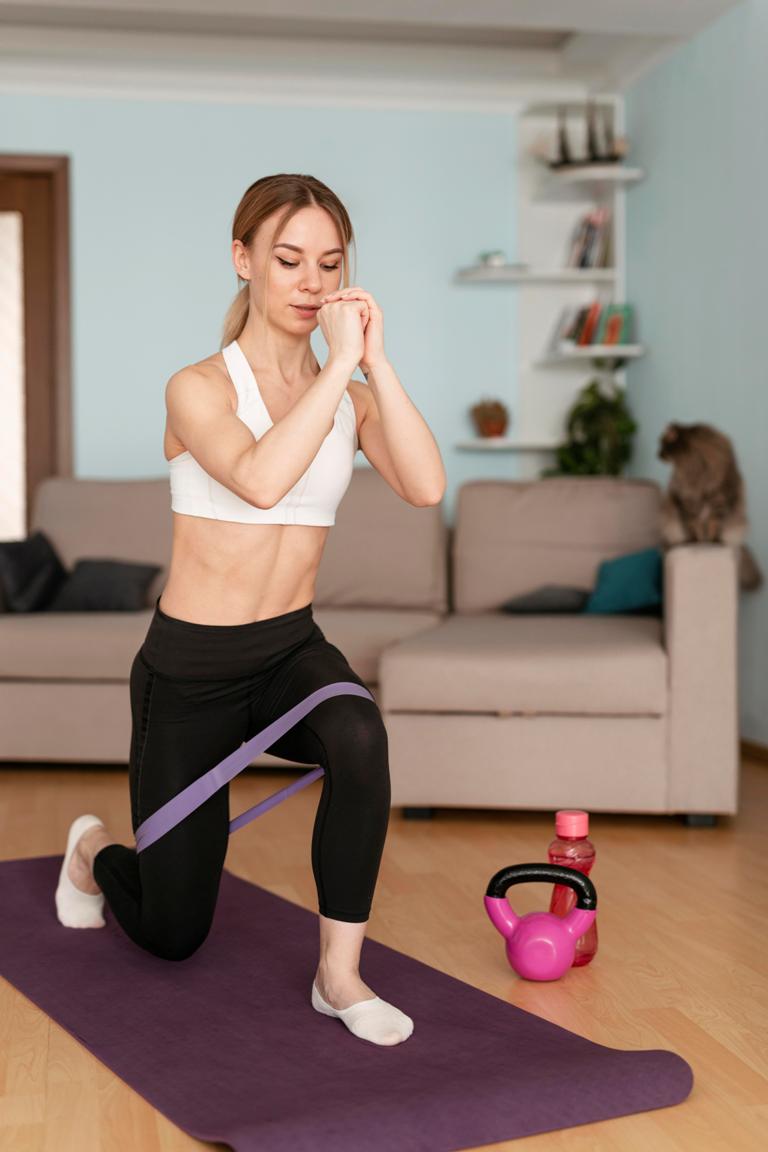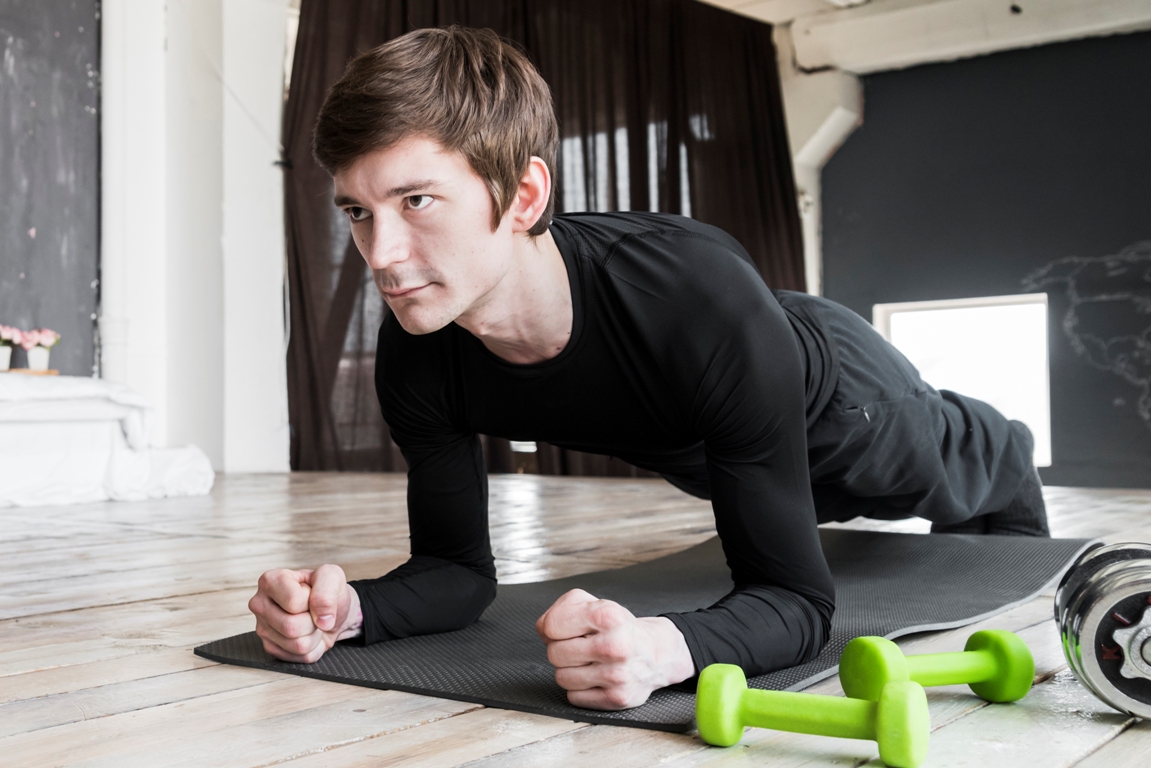Building muscle at home is not only achievable, but it’s also convenient and cost-effective. Whether you’re looking to improve your strength, sculpt your body, or simply stay fit, a home workout routine can help you reach your goals without the need for a gym membership. In this guide, we’ll explore how to build muscle at home using effective exercises, proper nutrition, and key strategies to keep you motivated.
Table of Contents
- Why Building Muscle at Home is Possible
- Understanding Muscle Growth
- Essential Equipment for Building Muscle at Home
- Best Exercises to Build Muscle at Home Without Equipment
- How to Create an Effective Home Workout Plan
Key Takeaways
- Muscle growth at home is possible with bodyweight exercises and minimal equipment.
- Consistency, nutrition, and recovery are crucial for building muscle at home.
- Progressive overload and targeting all muscle groups are key to seeing results.
Why Building Muscle at Home is Possible
Many people assume that building muscle requires access to a fully equipped gym, but this isn’t true. With proper guidance and dedication, you can achieve significant muscle growth at home. The key is using effective bodyweight exercises, utilizing minimal equipment like dumbbells or resistance bands, and maintaining a structured routine.

Working out at home provides flexibility, saves time, and eliminates the cost of a gym membership. It also allows for personalized routines that fit your fitness level and schedule. Whether you’re using just your bodyweight or a few pieces of equipment, building muscle at home is entirely achievable.
Understanding Muscle Growth
How Does Muscle Grow?
Muscle growth, or hypertrophy, occurs when your muscles are stressed through resistance, causing microscopic damage to muscle fibers. This triggers the body to repair and strengthen these fibers, leading to increased muscle size. When you consistently challenge your muscles with exercises, you stimulate this growth process.
| Factor | Impact on Muscle Growth |
|---|---|
| Resistance | Essential for triggering hypertrophy through mechanical stress. |
| Nutrition | Provides the nutrients required for muscle repair and growth. |
| Rest | Allows muscle fibers to recover and strengthen. |
The Role of Resistance Training for Muscle Growth at Home
Resistance training is key to stimulating muscle growth. While weights and gym machines provide resistance, you can easily replicate this with bodyweight exercises or resistance bands. For example, exercises like push-ups, squats, and lunges apply resistance using your body weight, effectively building muscle at home.
Nutrition’s Impact on Muscle Growth at Home
Nutrition plays a crucial role in building muscle at home. Consuming the right amount of protein, carbohydrates, and fats supports muscle repair and provides the energy needed for your workouts. Focus on protein-rich foods like chicken, fish, and beans to aid muscle recovery.

Essential Equipment for Building Muscle at Home
Do You Need Equipment to Build Muscle at Home?
You don’t need a fully stocked gym to build muscle at home. Many bodyweight exercises are highly effective for strength training, especially when performed with proper technique and progression. However, using minimal equipment like dumbbells or resistance bands can enhance your workouts and help you target specific muscles more effectively.
Best Home Equipment for Building Muscle
While it’s possible to build muscle without any equipment, having a few pieces of gear can elevate your home workouts. Here are some essential items:
- Dumbbells: Great for targeting upper body and lower body muscles.
- Resistance Bands: Versatile and ideal for resistance-based exercises.
- Pull-Up Bar: Perfect for back and biceps exercises.
Budget-Friendly Home Gym Setup for Muscle Building
Creating a home gym doesn’t have to break the bank. Investing in a few affordable items can significantly improve your muscle-building progress. For example, a basic set of dumbbells, resistance bands, and a pull-up bar can all be purchased for under $100, providing everything you need for a solid home workout routine.

Best Exercises to Build Muscle at Home Without Equipment
Bodyweight Exercises for Muscle Growth
Bodyweight exercises are an excellent way to build muscle at home without the need for equipment. These exercises rely on your body weight to provide resistance, targeting various muscle groups and promoting strength. Here are some key bodyweight exercises:
- Push-Ups: Target chest, shoulders, and triceps.
- Squats: Work on leg and glute muscles.
- Planks: Focus on core strength and stability.
- Lunges: Great for legs and balance improvement.
Progressive Overload Without Equipment
Progressive overload is the principle of gradually increasing the intensity of your workouts to continuously challenge your muscles. With bodyweight exercises, you can achieve this by increasing the number of reps, changing the exercise variation (e.g., incline push-ups), or shortening rest times.
How to Create an Effective Home Workout Plan
How to Structure a Home Workout Routine to Build Muscle
An effective home workout routine should focus on all major muscle groups and ensure balanced development. Aim for 3-5 workouts per week, each targeting different muscle groups. For example:
| Day | Muscle Group |
|---|---|
| Monday | Chest and Triceps |
| Wednesday | Back and Biceps |
| Friday | Legs and Shoulders |
How Many Sets and Reps to Build Muscle at Home
For muscle growth, aim for 3-4 sets of 8-12 reps per exercise. This range has been shown to be effective for hypertrophy, helping you build strength and size. Adjust the number of sets and reps based on your fitness level and goals.
The Importance of Rest and Recovery in Muscle Building
Rest is just as important as the workout itself when it comes to building muscle. Ensure that you take at least one day off between working out the same muscle group to allow for proper recovery and growth. Overtraining can lead to injuries and hinder your progress.
Best Exercises to Build Muscle at Home With Minimal Equipment
Using Dumbbells for Full-Body Muscle Building
Dumbbells are one of the most versatile tools for building muscle at home. They allow you to target multiple muscle groups and progressively increase resistance. Here are a few highly effective dumbbell exercises:
- Dumbbell Rows: Excellent for developing back muscles and biceps. Ensure you keep your back straight and pull the weight towards your torso.
- Dumbbell Squats: Add resistance to your squats by holding dumbbells at your sides. This targets your quadriceps, hamstrings, and glutes.
- Dumbbell Shoulder Press: Targets the deltoids and triceps. Lift dumbbells from shoulder level upward, ensuring controlled movement.
Building Muscle with Resistance Bands
Resistance bands are an affordable and effective way to build muscle. They provide variable resistance, which means the tension increases as you stretch the band further, providing a unique challenge. Here are some resistance band exercises:
- Resistance Band Chest Press: Attach a band to a stable object, then push forward from your chest, similar to a bench press, targeting chest muscles.
- Resistance Band Deadlifts: Stand on a band and pull upwards in a deadlift motion. This is great for your lower back, glutes, and hamstrings.
- Resistance Band Rows: Anchor the band at a low point and pull it towards you, focusing on your back muscles and biceps.

Combining Bodyweight and Equipment for Maximum Results
One of the best ways to maximize your results at home is to combine both bodyweight exercises and equipment-based exercises. This allows you to target different muscle groups and incorporate progressive overload. For example, you could alternate between push-ups and dumbbell presses or squats and weighted lunges.
Nutrition for Building Muscle at Home
What to Eat to Build Muscle at Home
Your diet plays a significant role in muscle growth. To build muscle, you need to consume more calories than you burn, with a focus on protein to support muscle repair and growth. Some good food sources include:
- Lean proteins like chicken, turkey, and fish
- Complex carbohydrates like sweet potatoes, oats, and brown rice
- Healthy fats from sources like avocados, nuts, and olive oil
The Importance of Protein for Muscle Growth
Protein is essential for muscle repair after a workout. Aim for at least 1.6 grams of protein per kilogram of body weight each day to maximize muscle growth. This can be achieved through both whole foods and supplements like protein powders.
| Food Source | Protein Content (per 100g) |
|---|---|
| Chicken Breast | 31g |
| Salmon | 25g |
| Lentils | 9g |
| Eggs | 13g |
Supplements for Muscle Building at Home
While supplements are not necessary, they can help enhance your muscle-building efforts if you’re struggling to meet your nutritional goals through food alone. The most common supplements include:
- Whey Protein: A fast-digesting protein that supports muscle repair post-workout.
- Creatine: Helps increase strength and improve exercise performance.
- BCAAs: Branched-chain amino acids can help reduce muscle soreness and fatigue.
Staying Motivated While Building Muscle at Home
How to Stay Consistent with Home Workouts
Staying motivated while working out at home can be a challenge, but there are ways to stay on track. Here are some tips:
- Set specific, measurable goals, such as increasing your push-up reps by 10 over the next month.
- Track your progress using a fitness app or journal. Seeing improvements can boost motivation.
- Mix up your routine to keep it interesting. Try different exercises or increase intensity with supersets or circuit training.
Dealing with Plateaus When Building Muscle at Home
Plateaus are common when trying to build muscle at home. To overcome them, you can try increasing the weight you’re using, adjusting your reps and sets, or introducing new exercises to challenge your body in different ways. Remember that consistency and variety are key to continuous progress.

Common Mistakes to Avoid When Building Muscle at Home
Not Focusing on Form and Technique
One of the biggest mistakes people make when building muscle at home is neglecting proper form. Without proper form, you risk injury and may not see the results you’re aiming for. Always focus on quality over quantity, especially with bodyweight exercises like push-ups and squats.
Ignoring Recovery and Overtraining
Overtraining is another common pitfall. Your muscles need time to recover and repair after a workout, which is when growth happens. Aim for at least one rest day between training the same muscle groups to allow for proper recovery.
Neglecting Nutrition
No matter how hard you train, if your nutrition isn’t supporting your goals, you won’t see significant muscle growth. Ensure you’re eating enough calories, especially protein, to fuel muscle recovery and growth.
Frequently Asked Questions
Can You Really Build Muscle at Home Without Equipment?
Yes, you can build muscle at home without equipment through bodyweight exercises like push-ups, squats, and planks. These exercises can be scaled to increase intensity and progressively challenge your muscles.
How Long Does It Take to Build Muscle at Home?
The time it takes to build muscle at home depends on factors like your starting fitness level, workout consistency, and nutrition. With regular workouts and proper nutrition, you can start to see noticeable results in 4-6 weeks.
How Often Should You Work Out to Build Muscle at Home?
Aim to work out at least 3-5 times per week, focusing on different muscle groups. Allow rest days in between sessions to ensure proper recovery and muscle growth.
Do You Need Supplements to Build Muscle at Home?
Supplements are not necessary, but they can help if you’re struggling to meet your nutritional needs through food alone. Protein powder and creatine are two common supplements used to support muscle growth.






